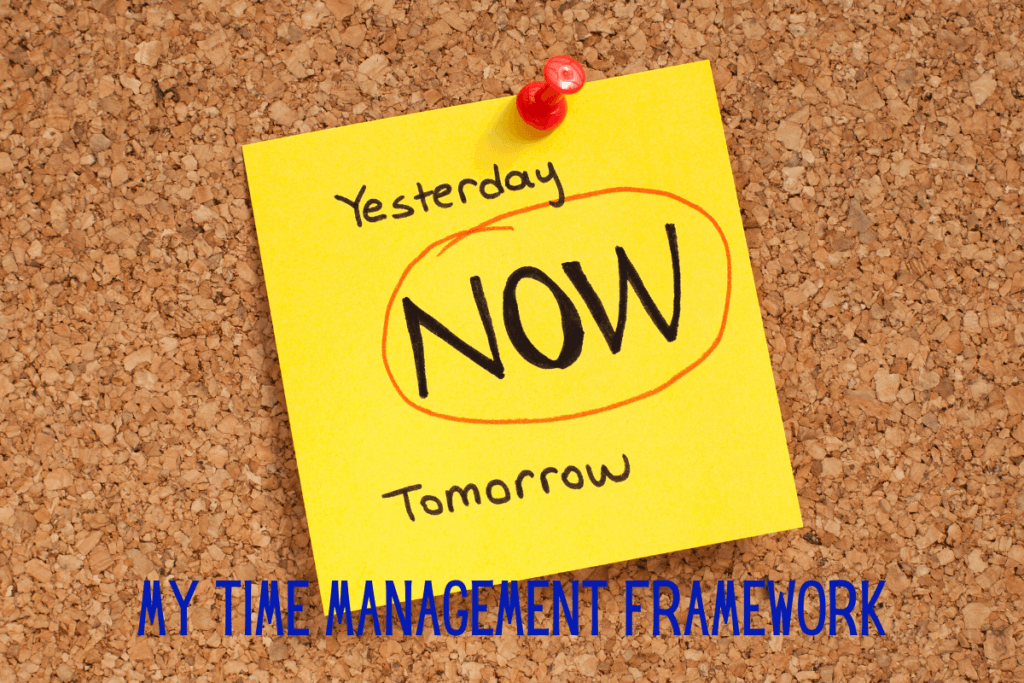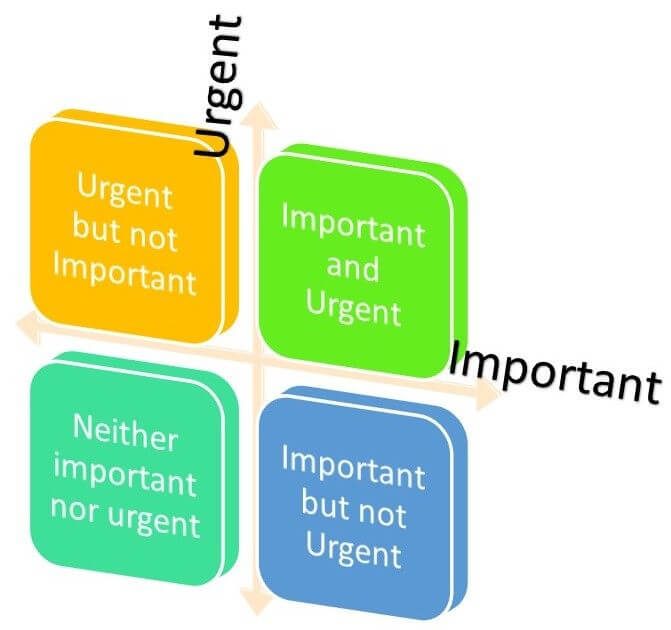
Time is both a renewable and a non-renewable resource. We have just 24 hours in a day, which we use and deplete every moment. But every day we start with those 24 hours again.
Having frameworks help in doing things efficiently and effectively. And it’s the same with time management frameworks. Many people think that if we talk of efficiency, we are falling prey to the established “definitions” of working, and hence not so cool.
To be honest, I give a damn whether I come across as cool or not. All I care about is getting things done properly so that I don’t have to compromise on doing things I enjoy. Like watching the sunset on the beach or writing fiction:)
There are many time management frameworks in the public domain, proposed by eminent personalities from US presidents and corporate leaders to noted psychologists. But none of them are self-sufficient tools to manage your time. They need to be mixed and tweaked to suit your unique needs.
Today I am laying down my personal framework that works best for me. It is derived from different frameworks as you will see. You can build your own framework as you need.
Ivy Lee method
Ivy Ledbetter Lee was an American peak productivity consultant who advised the likes of John D Rockfeller and Charles M Schwab. This is his process that helped improve their workplace productivity:
- At the end of each work day you should make a list of 6 tasks you will complete the next day. I like to believe that he meant the next working day!
- Prioritize the tasks in order of importance.
- Concentrate on the first task the next day.
- Only after the first task is finished you should move to the second one.
- Work through your list till the end of the day.
- If you have any unfinished task, move it to the task list for the next day.
- Repeat this process every working day.
You must be shouting out in your mind right now – this is insane. I have hundreds of thousands of tasks to do, how can I choose just five. And even if I choose them, what about the urgent tasks that come up, the continuous fire that keeps erupting with one team or the other.
I have just this to say to you.
You need to learn prioritisation before everything else. And even then you need to remember that you cannot finish all those hundred tasks in a day. If you could, you would have done so long ago. In fact, sooner you accept you can get only a limited number of tasks done in a day, better for you.
If you don’t commit to at least a couple of tasks every day, you will keep flitting between them as they come up, and end up “not doing anything. Share on XMy take on Ivy Lee Method for managing time
Like the foundation of a building is dug deeper than level 0, we must start preparing for the day the night before.I have been following the Ivy Lee method since I can remember, without knowing this basic and simple task for managing time had a name. I believe that when you have the list of tasks to be done ready, you tend to waste less time whether in professional tasks or personal.
I have a thing about odd numbers, so I always write down five tasks. Feel free to choose a number to your liking, but as Ivy Lee said, no more than six.
James Clear has an excellent post on Ivy Lee method.
Use Eisenhower matrix for prioritising tasks
Next, you need to prioritise the tasks you have listed and then give them a sequence of 1 to 5 or 1 to 6, depending upon the number of tasks chosen. To prioritise, I use the Eishenhower matrix, and you can too.
I have two kinds of problems: urgent and important. The urgent are not important and important are never urgent.
President Eisenhower, 1954

Activities whose outcome takes us a step closer to achieving our goals are the important activities. These goals could be personal or professional. On the other hand, activities that require your immediate attention are the urgent activities. These activities are usually associated with fulfilling someone else’s goals, i.e. they are important for someone else.
Important tasks take you closer to your goals. Share on XIt is the important activities that need your maximum time and effort, not the urgent ones.
Your priority should be as follows:
1. Important and urgent
2. Important but not urgent
3. Urgent but not important
I discuss important vs urgent tasks here.
Are you ready to Eat the Frog
Besides the Eisenhower matrix, I try to prioritise on the basis of how unpleasant a work is. The higher the unpleasant quotient of a task, higher its rank in the list.
As Mark Twain advised once:
If it’s your job to eat a frog, it’s best to do it first thing in the morning. And If it’s your job to eat two frogs, it’s best to eat the biggest one first.
In case you are wondering, why do the most unpleasant tasks first, here is my take on it.
Once you have the toughest task off your hands, it leaves your mind free to do everything else. The task might have remained unfinished because it was too big or too difficult for you to take in one go. Break it down into smaller steps or ask for help.
Final thoughts
While you are doing any task, remember perfection is the bane of completion. If you routinely find it difficult to take a task off your list, you badly need to be reminded of these two:
- Parkinson’s Law – Time expands to fill the time allotted to it.
- Pareto’s Principle – 80% of output is achieved from 20% of input
Also, always have a superlist of tasks ready so that if you have time, you can take them off and rest. Which brings me to another important point. If you end up doing more things than the five or six you chose, add them to the list and mark them complete. It will give you a sense of achievement that is necessary to continue pushing for closure.
So this is my current time management framework:
- Make a list of five or six tasks you need to complete during the day. Ideally they should be done the previous night so that when you get up in the morning you don’t have to rack your brains to decide what needs to be done.
- Prioritise the tasks and give them a number starting from one, call for the most important task.
- The most difficult task, whether because it’s complex or because you hate doing it, must be allotted priority 1.
- Work through the list the next day starting from the first task.
Give this time management framework your own spin and let me know how it works for you.


Trackbacks/Pingbacks